Valencia Pride Mango
Valencia Pride Mango is a distinct and vibrant mango variety known for its rich, sweet flavor and smooth texture. The fruit has a medium to large size and is typically oval in shape, with a beautiful skin that changes color as it ripens. When mature, the skin of the Valencia Pride mango is a blend of deep green with subtle hints of red and yellow, giving it an alluring and tropical appearance.
The flesh of the Valencia Pride mango is bright orange, smooth, and buttery, with very few fibers, making it ideal for eating fresh or using in a variety of recipes. Its flavor is intense and sweet with a slight tang, which gives it a perfect balance of sweetness and acidity. The fruit is known for its excellent juiciness and a rich, aromatic fragrance that fills the air when it’s cut open.
Originating from Florida, this variety of mango is a hybrid of the Haden and Brooks mangoes, offering the best characteristics of both. Its vibrant colors and flavor profile have made it a popular choice among mango enthusiasts worldwide. It is often used in smoothies, salsas, salads, desserts, or simply enjoyed on its own.
Valencia Pride mangoes are not only appreciated for their exceptional taste but also for their relatively large size and impressive shelf life compared to some other mango varieties. As they ripen, they become more tender and their flavor intensifies, making them ideal for anyone who loves a flavorful tropical fruit experience.
The Valencia Pride Mango is highly regarded for its vibrant color, exceptional sweetness, and excellent taste profile. Here’s a detailed look at these aspects:
Color:
- Skin: The skin of the Valencia Pride mango is typically a mix of green and red hues, with the red intensifying as the mango ripens. The color can range from green to yellowish-red as the fruit reaches full maturity.
- Flesh: The flesh of the Valencia Pride mango is a rich, deep orange color, which is one of the reasons it’s so visually appealing.
Taste:
- The Valencia Pride mango is known for its rich, tropical, and intense flavor. It strikes a perfect balance between sweetness and slight acidity, offering a more complex taste than many other varieties. Its flavor is often described as a combination of peach, pineapple, and citrus, making it refreshing and satisfying.
Sweetness:
- This variety is generally very sweet, with high sugar content. On the sweetness scale, it’s considered one of the sweeter mango varieties, often rated between 18-20% sugar content when fully ripe. The sweetness is complemented by a subtle tanginess that enhances its flavor profile.
Total Soluble Solids (TSS):
- TSS (Total Soluble Solids) is a measure of the sugars in the fruit, and for the Valencia Pride mango, it typically ranges between 18-22%. The higher the TSS, the sweeter and more flavorful the mango will be. This makes the Valencia Pride mango highly desirable for eating fresh or using in recipes where sweetness is a key factor.
In summary, the Valencia Pride mango stands out for its vibrant appearance, exceptional sweetness, and high TSS, making it a favorite among mango lovers for both its flavor and versatility.
Valencia Pride Mango cultivation involves a number of specific practices to ensure the production of high-quality fruit. This variety is known for its vigorous growth and large, flavorful mangoes, making it a popular choice for commercial cultivation, especially in tropical and subtropical regions.
Climate Requirements:
- Tropical and Subtropical Regions: Valencia Pride mangoes thrive in warm, tropical climates. They require high temperatures and lots of sunlight to ripen properly. The ideal temperature range for growth is between 24°C to 30°C (75°F to 86°F). While the trees are somewhat drought-tolerant, they do best with consistent rainfall or regular irrigation.
- Frost Sensitivity: Mango trees are highly sensitive to frost, and even light frosts can damage the trees or fruit. Therefore, they are best cultivated in regions where the risk of frost is minimal.
Soil Requirements:
- Well-Drained Soil: Mango trees, including the Valencia Pride variety, require well-drained soil to avoid root rot. Sandy or loamy soil with good drainage is ideal. Soil pH should be slightly acidic to neutral (around 5.5 to 7.5).
- Fertility: While Valencia Pride mango trees can grow in less fertile soil, they perform best with regular feeding. Fertilizers rich in nitrogen, phosphorus, and potassium support healthy growth and fruit production. Compost or organic matter can also be added to improve soil structure and nutrient content.
Planting:
- Spacing: Mango trees need plenty of space to grow. When planting Valencia Pride mango trees, space them about 10 to 15 feet apart to allow for proper air circulation and sunlight penetration.
- Planting Time: In tropical areas, mango trees can be planted year-round, but planting just before the start of the rainy season is ideal, as it helps the tree establish roots and reduces the need for supplementary watering.
- Tree Size: Valencia Pride mango trees are generally large, with some reaching up to 15 to 20 feet in height. This requires careful planning in terms of spacing and pruning to ensure that trees don’t become overcrowded.
Care and Maintenance:
- Watering: While mango trees are drought-tolerant once established, they require consistent watering during the flowering and fruit-setting stages. However, overwatering should be avoided, as it can lead to root rot.
- Pruning: Regular pruning helps maintain the shape of the tree, encourages strong growth, and removes dead or diseased wood. Pruning also improves airflow and sunlight exposure to the fruit-bearing branches.
- Pest and Disease Management: Common pests include aphids, mealybugs, and fruit flies. Fungal infections like anthracnose can also affect the fruit. It’s essential to use organic pesticides or other integrated pest management practices to control these problems.
Flowering and Pollination:
- Flowering: The Valencia Pride mango tree typically flowers in the spring, though it may vary slightly based on local climate conditions. The tree produces large panicles (flower clusters) that can be affected by weather conditions. High humidity and strong winds can sometimes damage the flowers.
- Pollination: While mango trees are self-pollinating, cross-pollination from other mango varieties can sometimes improve fruit set and size. Having multiple mango trees nearby can increase the likelihood of successful pollination.
Harvesting:
- Maturity: Valencia Pride mangoes take around 4 to 5 months to mature after flowering. The fruits will usually start to change color from green to a more vibrant yellow-red as they ripen.
- Harvest Time: The best time to harvest is when the mangoes have reached their mature size, and their skin has developed a rich color. If harvested too early, they may not develop full flavor, but harvesting too late can lead to overripe fruit and possible damage.
Post-Harvest Care:
- After harvesting, mangoes are typically allowed to ripen off the tree. They should be kept in a cool, dry place to finish ripening. Once fully ripe, they are often used fresh, in smoothies, salsas, or desserts, but they can also be preserved through drying or canning.
Challenges in Cultivation:
- Frost Sensitivity: As mentioned, frost can be a significant threat to mango trees, especially during the winter months. Ensuring that mango trees are planted in areas with low frost risk or using protective measures, like frost cloths, is crucial.
- Water Stress: While mangoes are drought-tolerant, water stress during flowering or fruit setting can result in poor fruit development. Thus, careful irrigation management is necessary during the growing season.
Yield:
- Once mature (usually around 3 to 5 years after planting), a Valencia Pride mango tree can produce significant yields, typically yielding 300 to 500 fruits per tree annually, depending on the growing conditions and care provided. In optimal conditions, the yield can be even higher.
Economic Importance:
- The Valencia Pride mango is a commercially valuable variety due to its large, sweet fruit and the demand for high-quality mangoes in international markets. Its cultivation is especially popular in regions like Florida (USA), as well as other tropical and subtropical regions worldwide.



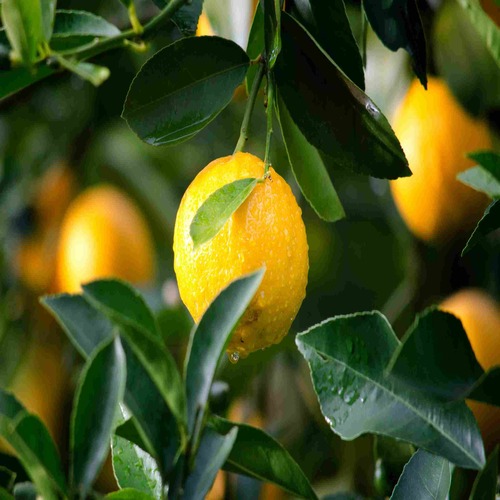

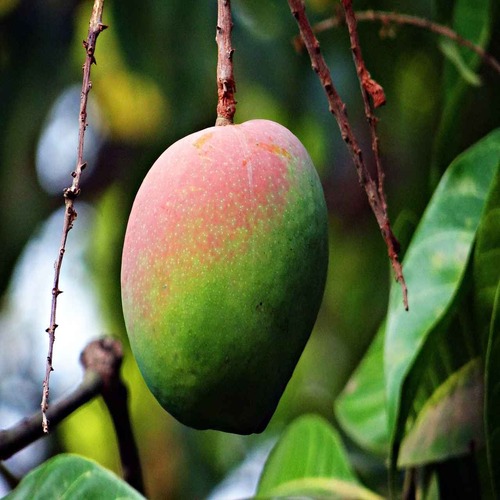











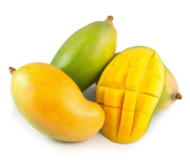

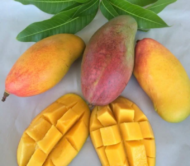
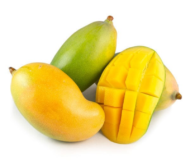



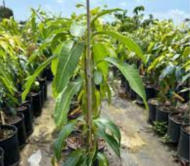
Reviews
Clear filtersThere are no reviews yet.